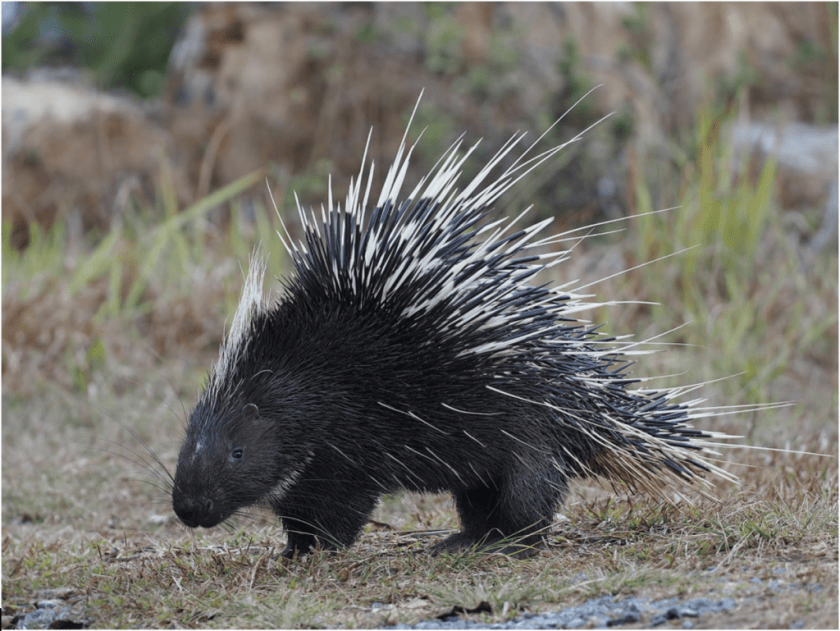South Africa’s lion farming industry is rife with cruelty and is fuelling the illegal international trade of big cat bones, according to a new research paper published in the scientific journal Nature Conservation.
The study by World Animal Protection is based on direct interviews with whistleblowing workers at two closed-access lion facilities in South Africa’s North West Province.
According to the report, legal activities such as commercial captive lion breeding and canned hunting – the hunting of captive-bred wild animals in small, fenced enclosures with no chance of escape – are being used to mask involvement in the illegal international trade of lion and tiger bones.
Several animal welfare violations were also reported, including malnutrition, lack of clean water, filthy enclosures and animals being deliberately starved throughout the low-hunting season.
Illegal hunting practices abound, including animals being drugged and hunted within an hour of release in enclosures that violate legal minimum size requirements.
Finally, the whistleblowers reported hazardous conditions for workers at the facilities, and suggested there may be shifts towards commercial exploitation of other felid species like tigers which could be used as substitutes in the bone trade.
It is estimated that between 8,000-12,000 lions and other big cats, including tigers, are bred and kept in captivity in more than 350 facilities across the country. To evade detection during professional inspections, farm owners use various strategies, such as security cameras, patrols, and messaging apps.
“Our study highlights the troubling reality of South Africa’s captive lion industry. Legal activities are being exploited to facilitate illegal trade, and this is compounded by serious animal welfare violations and unsafe conditions for workers. Urgent action is needed to protect lions and people.”
Lead researcher Dr Angie Elwin, Research Manager at World Animal Protection.
Although the commercial captive breeding and canned hunting of lions remains legal, though poorly regulated in South Africa, the export of lion skeletons – including claws and teeth – was declared unconstitutional by the South African High Court in 2019.
In 2021, the South African Government announced its intention to immediately halt the “domestication and exploitation of lions, and to ultimately close all captive lion facilities in South Africa”.
However, a lack of enforcement of regulations and clarity on the future of the industry, has left a legal grey area, enabling some farms to operate what on the surface appear to be legitimate captive breeding and ‘canned’ trophy hunting businesses – but which in reality supply the illegal international big cat bone trade facilitated by organised crime gangs.
In light of these revelations, the study calls for the South African Government to implement a comprehensive and well-managed plan to transition away from current practices in the captive lion industry. Key recommendations include:
- Full Audit of the Industry: To ensure all commercial captive lion farms are officially registered and compliant with regulations until the industry is phased out.
- Breeding Moratorium: Establishment of an immediate moratorium on breeding to prevent further growth of the commercial captive lion population.
- Prevention of Bone Stockpiling: Development and enforcement of plans to prevent the accumulation of lion bones, which risks fuelling the illegal international lion bone trade.
- Phase out Plan: Enactment of a time-bound strategic plan to phase out the captive lion farming industry, ensuring ethical treatment of animals and safety for workers.
“The South African Government must take immediate action to fulfil its public pledge to end the controversial captive lion industry. Without a comprehensive time-bound plan and stringent enforcement, this commercial industry will continue to pose significant legal, animal cruelty, and conservation concerns.”
Senior researcher Dr Neil D’Cruze, Head of Wildlife Research at World Animal Protection.
This study serves as a crucial call to action for both the South African Government and the international community to address and resolve the complex issues surrounding the captive lion industry.
The publication comes at a time when South African NGO Blood Lions encourages the public to raise their voice by sharing the 2024 World Lion Day “You’re killing them softly” campaign message, aimed at informing tourists and visitors to lion farms about the hidden suffering and cruelty involved, and to sign this petition urging the South African government among others to extend the ban on captive lion breeding and trading to other predators.
Original source:
Elwin A, Asfaw E, D’Cruze N (2024) Under the lion’s paw: lion farming in South Africa and the illegal international bone trade. Nature Conservation 56: 1–17. https://doi.org/10.3897/natureconservation.56.124555
***




















